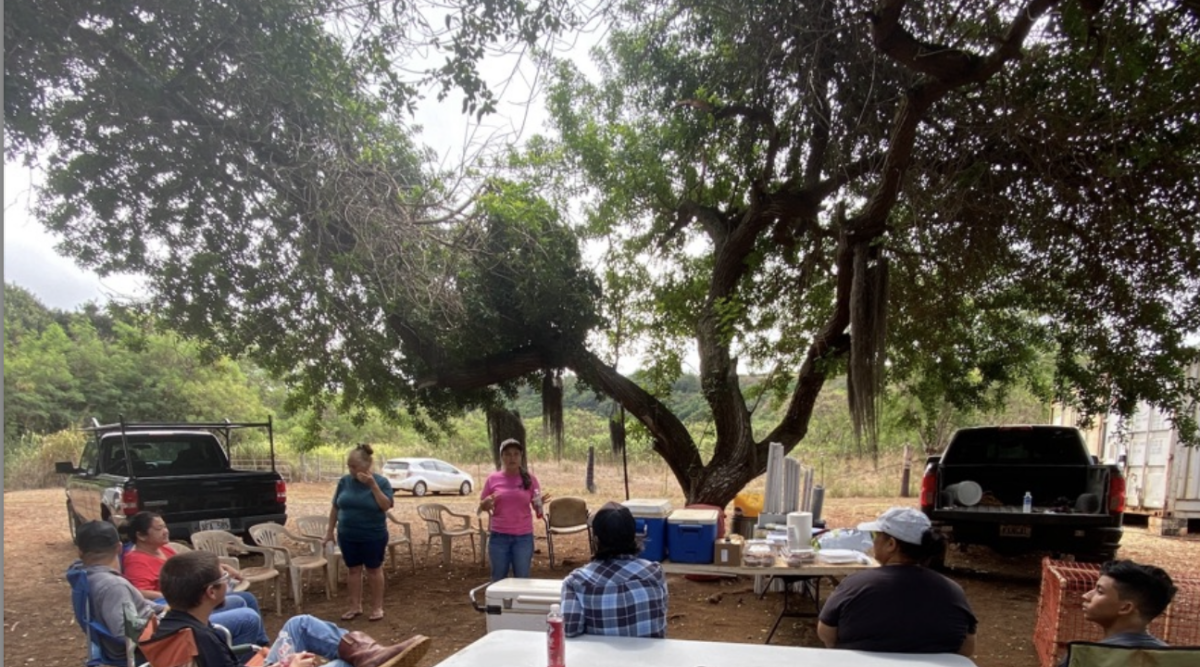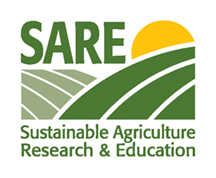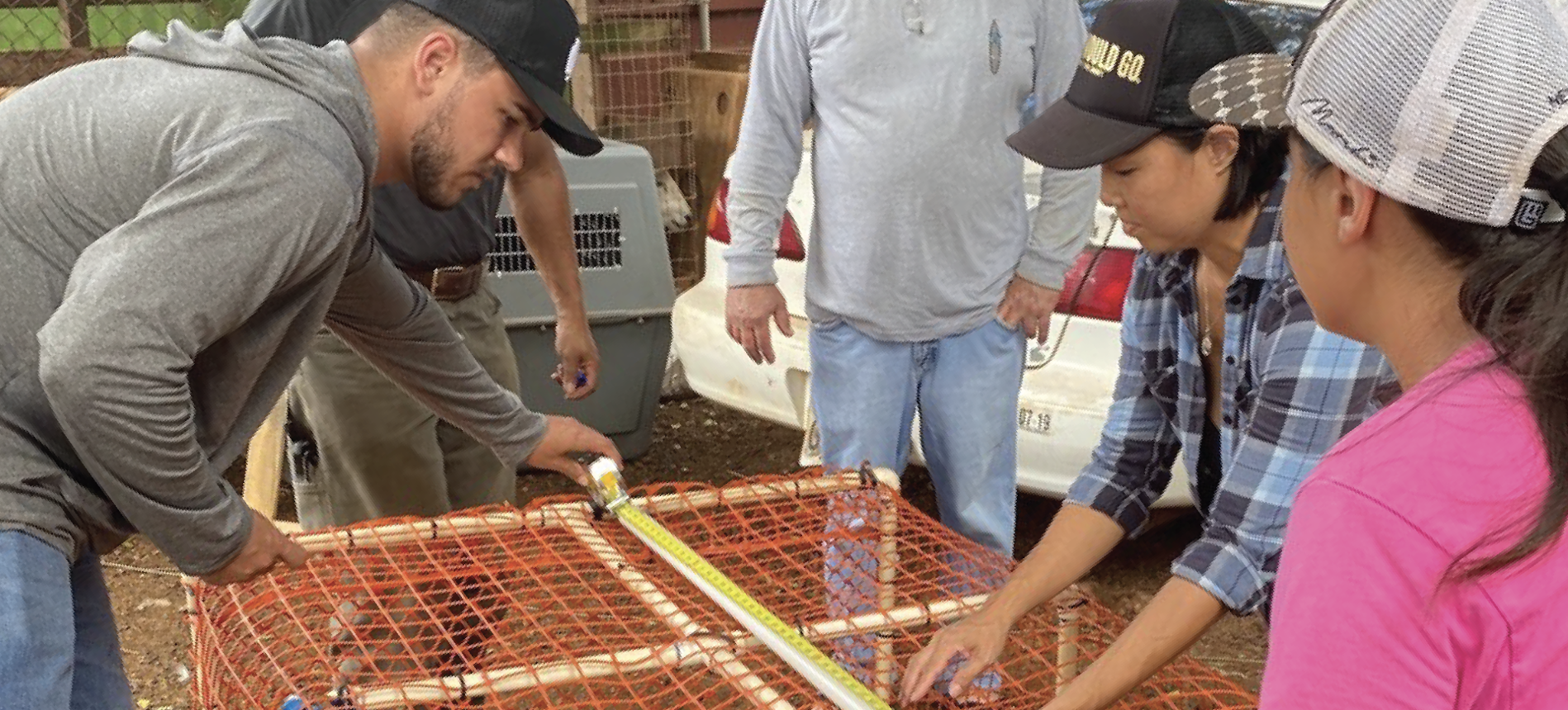
Volunteer-engaged, on-farm research builds food system resilience and small farmer's grant-seeking capacity.
SARE is very helpful. Trying to manage a federal grant is so daunting. The paperwork that goes into it and the amount of recording, it gets to the point where you don't have time to be a farmer because you're too busy doing the paperwork. ... Having smaller grants available helps new farmers, and farmers who have never had a business to manage those funds as well."
—Nicole Correa, Farmer/Rancher Grantee
Modest SARE Grants are Manageable for Farmers
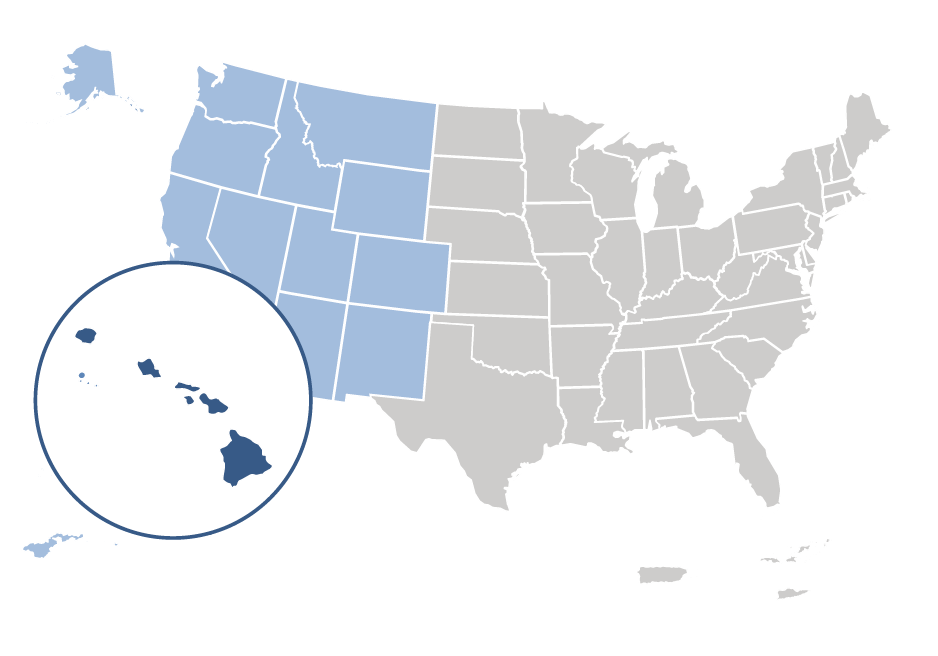
Region: Western
State: Hawai'i
Grant Type: Farmer/Rancher
Grant: FW19-344
SARE POST-PROJECT EVALUATION IMPACT MODEL
This evaluation impact model is specific to this SARE-funded project.
Sustainability Impacts
The project grantees and stakeholders contributed to the following sustainability impacts:
- Environmental sustainability impacts
- Economic sustainability impacts
- Production efficiency impacts
- Social sustainability impacts
Grantee Indicators
(Farmer/Rancher)
Project grantees (defined above) achieved sustainability impacts by engaging with the following indicators through involvement with project activities:
- Increased knowledge/skills
- Increased capacity/motivation
- Increased engagement
- Practice change
- Career growth
Stakeholder Indicators
(Farmers, Students, Volunteers)
Project stakeholders (defined above) achieved sustainability impacts by engaging with the following indicators through involvement with project activities:
- Increased knowledge/skills
- Practice change
- Career growth
The Success Story
Hawai’i is located over 2,000 miles from the continental United States. More than 80% of Hawaii’s food is imported, which makes it particularly vulnerable to natural disasters and shipping disruptions. Small-scale food production operations, including poultry production, can reduce reliance on imports. Nicole Correa tested the influence of two types of poultry housing on broiler chicken weight gain, determining that the larger caging option was associated with higher growth rates, better protection from predators, more grass and weed consumption (as opposed to broiler mix), and reduced signs of stress while handling. In addition to disseminating these practices in Hawai’i to students and veteran farmers, her findings continue to prompt practice change among homesteaders in South Carolina where Correa now works as an Extension agent.
Now I work with a lot of homesteaders. ... Many have moved to South Carolina in the last three years. Most of them want to be sustainable, they want to be able to feed their own families. ... I've used my SARE research. I've given out that link so many times to people and been able to say, 'These are a couple of options for your small scale production.”
—Nicole Correa, Farmer/Rancher Grantee
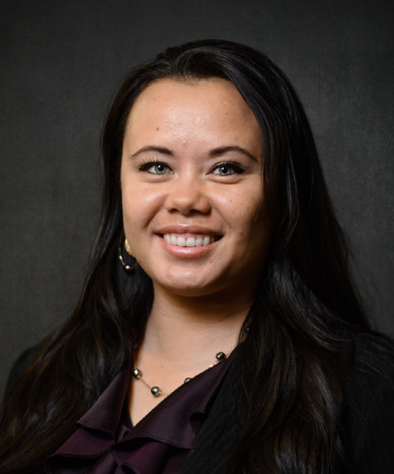
Grantee (Farmer/Rancher) Highlights
SARE grant funding was essential to Correa’s ability to carry out the project. She had taken a course in grant writing while completing her master’s degree in animal science and this grant was not her first, however, she believes it was instrumental in her receiving a grant from another funder in that it legitimized her as a researcher and demonstrated she could manage a grant well. Correa is motivated to continue researching the co-location of poultry production with solar panels to create diversified income and counterbalance the farmable land loss created by solar panel fields. She is also interested in studying poultry production on orchard cropland, which blends the typically siloed fields of horticulture and animal science. Currently, Correa is educating small-scale producers and homesteaders in South Carolina about Southern SARE’s grant opportunities and conferring on their research designs. She believes SARE’s farmer grants are particularly beneficial because they are modest in size, allowing people to gain confidence in grant seeking and management at a scale that doesn’t impede their ability to run their farms.
I’m just very thankful for the opportunity that SARE presented us. We would not have done the project if not for SARE. It was something we wanted to do, but I wasn’t going to be able to fund it. ... I do have producers who are looking into Southern SARE. A big topic of conversation right now is how to grow alfalfa in the South. I’ve walked them through what research would look like, the fact that they should be doing multiple treatments, different trials, duplications and why things like that matter.”
—Nicole Correa, Farmer/Rancher Grantee
From Grant Seeker to Grant-Seeking Educator
Other Stakeholder (Student, Volunteers, Farmers) Highlights
Part of the mission of the family farm where Correa carried out her research project is to contribute to Hawai’i’s sustainability and food security by providing agricultural education for anyone who wants to learn. This was prompted, in part, by Correa’s observations in college and graduate school that many agricultural science students did not have hands-on experience working with animals. The numerous volunteers that Correa engaged in her project learned how to interact with and weigh the birds, skills they then used to help with data collection. One college intern who came to the farm without any agricultural experience recently graduated with a bachelor’s degree in animal science and is interested in pursuing a graduate degree in veterinary science. A disabled veteran volunteer built social connections at the farm and is still volunteering today. Another veteran who gained knowledge and confidence through volunteering in the project went on to purchase his own farm where he is using poultry production methods learned under Correa’s tutelage.
Volunteers Gained Knowledge and Hands-On Experience
We accomplished a number of things that were not supposed to be part of the project. ... We had volunteers who would volunteer with us regularly. They wanted to see how we weighed the chickens and how to interact with the chickens.”
—Nicole Correa, Farmer/Rancher Grantee
Sustainability Impacts
Correa tested the innovative chicken-housing design by Michael DuPonte called the Hubbell Bubble. This caging style can be moved over grassy areas to distribute chicken manure that fertilizes the soil. After learning through Correa’s SARE project and her work as an extension agent, homesteaders in Hawai’i and South Carolina are now using the cage design, contributing to environmental sustainability on their land by improving soil health. Moreover, Correa observed that chickens housed in the Hubbell Bubble consumed more grass and weeds. Their reduced consumption of expensive chicken feed is a contributive factor in economic sustainability. The Hubbell Bubble design also positively impacted production efficiency by reducing loss to predators and increasing chicken weight. By utilizing the Hubbell Bubble design promoted by Correa, these small-scale producers are building more resilient, localized food systems.
[In South Carolina] people are dealing with raccoons, foxes, hawks. I’ve had really great discussions with producers about the Hubble Bubble ... and at least three producers have now built Hubbell Bubbles, so the information is relevant and very important.”
—Nicole Correa, Farmer/Rancher Grantee
The Hubbell Bubble Chicken Coop Prevents Loss to Predators

Barriers
Correa hoped her project would contribute to an increase in small-scale, commercial poultry production ventures in Hawai’i. However, the lack of processing facilities poses a significant challenge. In the context of her project, Correa learned that the cost of raising broilers and processing them on-farm only enables a producer to break even on costs, and to do so only by producing the maximum number of birds a farmer can legally process themselves. Coupled with increased costs for necessary materials such as feed and hay, Correa determined that her vision was not feasible.
SARE Research Surfaces Economic Barriers
The cost to create a processing facility that met the standards was outrageous. ... It was not going to be cost effective to create the unit to begin with. ...When we did the math, we would have had to do the maximum number of birds to break even. With such big hurdles, I didn’t see how it would be doable.”
—Nicole Correa, Farmer/Rancher Grantee
Contributors
Correa’s upbringing on Double D Farm and Ranch, a community-engaged family farm in Haleiwa, Hawai’i, coupled with the knowledge gained through her bachelor’s and master’s degrees in animal science, equipped her to effectively design and implement this impactful, volunteer-engaged research study.
